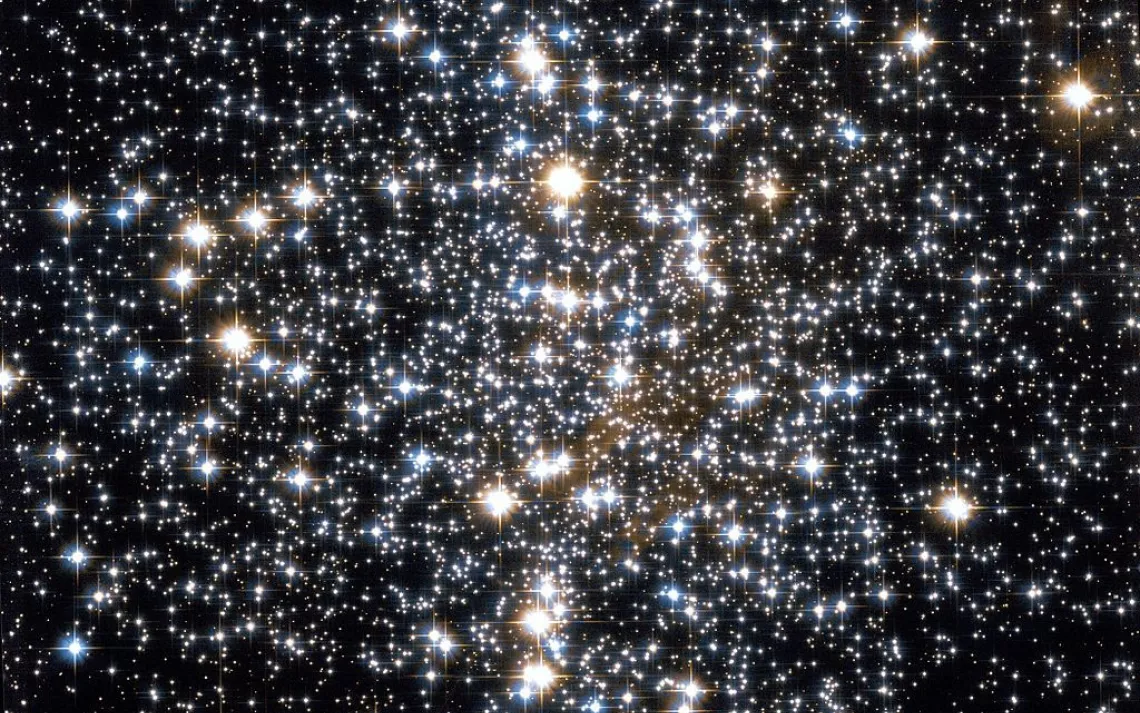June Observing Highlight: Globular Cluster M4

In June, the globular cluster M4 lies near Saturn and Mars near the southern horizon. | Photo courtesey of NASA/STScI/WikiSky
In June, people are outside in the evening, enjoying the sunset and the darkening of the sky as stars come out. Nights are short and days are long, so to see stars, you have to stay up past sunset, which can be around 9 P.M. in much of the United States but as late as 11 P.M. in Alaska. The summer solstice occurs on June 20 at 3:34 P.M. PDT. The first day of summer comes to the Northern Hemisphere when the sun stands directly over the Tropic of Cancer.
The full moon for June also occurs on June 20, at 4:02 A.M. PDT. Look for a big, beautiful—and basically full—moon on the evenings of June 19 and 20.
Just as it does every month, the moon passes planets and bright stars to make beautiful pairings. When you’re outside on summer evenings enjoying a bonfire, you’ll often hear someone ask, “What’s that bright star by the moon?” Here are the answers for June.
On June 10, a wide crescent moon stands between brilliant Jupiter and the brightest star in the constellation Leo, known as Regulus. On June 11, the moon will be even closer to Jupiter, less than 5 degrees to the planet’s left. Use binoculars or a telescope to spot Jupiter’s four largest moons, plus craters and mountains on the moon.
On June 14, the moon is just above the star Spica, in the constellation Virgo. Two nights later, the moon nears Mars, and on June 17, the moon is between Mars and Saturn. The moon then moves to less than 3 degrees from Saturn on June 18.
Saturn is another great June target for observers, because it reaches opposition on June 3, when it rises at sunset and sets at sunrise. Mars just reached opposition in May, and it lies close to Saturn, with Mars shining quite a bit more brightly. The two planets are also leading the Milky Way galaxy up from the horizon. The Milky Way is an excellent spot to find star clusters and nebulae.
As you look south to see bright Mars and Saturn, you may notice a star with a reddish tinge just to the lower right of Saturn. This is Antares in Scorpius. Use your binoculars to look just to the right of Antares to find M4, a 5.4-magnitude globular cluster. Impress your bonfire friends with the knowledge that this cluster contains stars that are up to 13 billion years old. Antares could go supernova at any time, exploding so brightly that for a while it would be visible as a point of light in the daytime. Antares and M4 may look close together, but Antares is 619 light-years away, while the star cluster is more than 7,000 light-years distant.
 The Magazine of The Sierra Club
The Magazine of The Sierra Club







